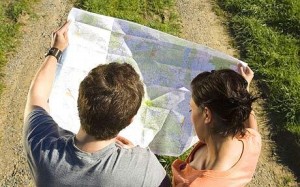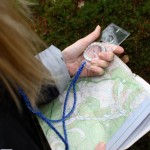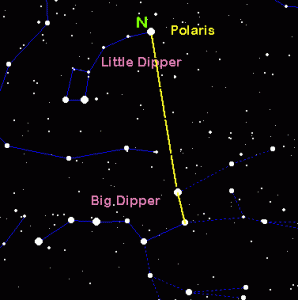Survival School: Stay on the Path
Summary
Now it the time to start honing your navigation skills. Here are some tips and tricks to keep you from relying on breadcrumbs to find your way.
Ideally, when plotting your escape routes it’s best to remain on the road. Venturing into the landscape is dangerous, full of unknown dangers from more than just the undead. In reality, you’ll need resources like flowing water, edible vegetation, and game animals who shy away from busy roads. Once away from the beaten path, it’s easy to get turned around and lose sight of your escape route. Relying on GPS during the apocalypse (or heck, even driving through Texas today) isn’t a good plan. We have no clue how long technology will continue to run post undead uprising. Now it the time to start honing your navigation skills. Below are some tips and tricks to keep you from relying on breadcrumbs to find your way.
Learn How to Read a Map
We’re all about being prepared, which means you should know well in advance what escape routes you plan to take.
Make sure you have a map, or numerous maps, in your go bag covering the locations you must travel through. Take a little time to study them. Find roads that take you near moving water sources so you can top up on fresh water and have a chance to bathe, catch fish, and gather edible vegetation growing nearby.
An easy map-reading guide:
- Check the map key. It’ll tell you what various symbols mean. Important for navigating via landmarks or finding towns/cities large enough to safely resupply.
- Learn how to gauge distance using the map scale. For 1:24,000 scale maps, one inch equals 2,000 feet. For 1:25,000 maps, 5 centimeters equals 1,250 meters. Most maps are drawn on grids to help facilitate calculations.
- For the most part, maps are color coded the same: Black – man-made structures, roads, train tracks, pipelines, and property boundaries. Brown – topographic features such as contour lines. Green – Vegetation features, like forests. Blue – Rivers, lakes, streams, swamps, water reserves. Red: Main roads, highways, and sometimes tunnels or survey lines.
Use Major Landmarks
Once you’re on the road, keep going for as long as possible before making a pit stop, especially if the area you’re traveling through is mostly wilderness. It’s no good putting yourself in unnecessary danger for a drink of water when you’ve got a full supply in the car. But once supplies start running low or you can’t stand the body odor of your traveling companions, take a few vital steps before heading into the woods:
- Find a spot in the road nearest to the body of water you seek.
- Double check with your map to make sure the water source is a river, large stream, or lake. Swamps and the like are stagnant and chock-full of harmful bacteria that won’t boil out using emergency purification techniques.
- Locate at least two major landmarks on the map, and then make visual confirmation from the point where you leave your car. This gives your brain something physical to work from while calculating which direction to walk on your return trip.
- Note which direction the sun is moving.
Calculating Distance
Using the map scale, judge how far your trip will take you from the road. Keep hikes short. Not only will this reduce exposure to danger, but it’ll use less energy to take a 30 minute hike compared to a 2 hour hike. Less energy means fewer calories burned. It’ll make your food supplies last longer. Also be mindful of the time of day. Schedule your trip so you have ample time to return before dark. Improvised camping is dangerous. You don’t know what native beasts lurk in the woods. Without proper shelter, you could wake up cuddling a snake. Or not wake up at all in the belly of a desperate, hungry mountain lion.
The easiest way to navigate new territory is with a map and compass to keep yourself oriented, even after scouting a few major landmarks. I won’t pretend to be an expert here. Heck, I get lost in the mall all the time. But that’s what the internet is for. Here’s a link to an excerpt from The Backpackers Field Manual by Rick Curtis that covers the basics of map and compass work.
Navigating without a compass
While we don’t advise leaving your compass at home once you’re on the run from the undead, accidents happen. Things get lost or broken in the shuffle. The dog ate your compass. Whatever. So on the off-chance you’re stuck without, here’s a couple simple ways to find north so you aren’t a lost babe in the woods, Hansel.
Never Eat Soggy Waffles. This is a mnemonic, a cheeky phrase used to memorize North, East, South, and West going clockwise. So once you’re facing North, East is to your right, South behind you, and West to your left.
Watch the sun: It rises in the East and sets to the West. If you don’t have time to watch the sun, there’s a quick-ish method to determine which way it’s moving:
- Find a tall stick and set it in the ground.
- Mark the top of the stick’s shadow with a rock (or whatever’s handy).
- Wait 15 minutes.
- Now mark the stick’s shadow with another rock.
- Put your left foot near the first rock, your right near the second. Now you’re facing north.
Using the stars: This takes a little more work, depending on visibility and your location. In the Northern Hemisphere, there’s two ways to find the North Star (Polaris).
- Big Dipper method: First, find the bugger. Then using the two stars forming the side of the ladle away from the handle, mentally draw a straight line until you hit a super bright star. That’s Polaris.
- Little Dipper method: Polaris is the final star in the Little Dipper’s handle. Super easy to navigate by, if you can find it.
There you have it, a few tips to prevent you from getting lost in your quest to find food and water while on the run from zombies.



